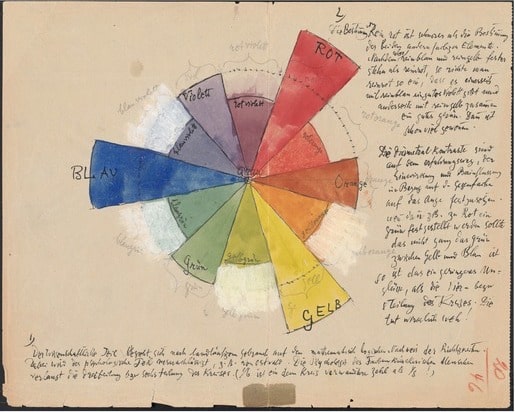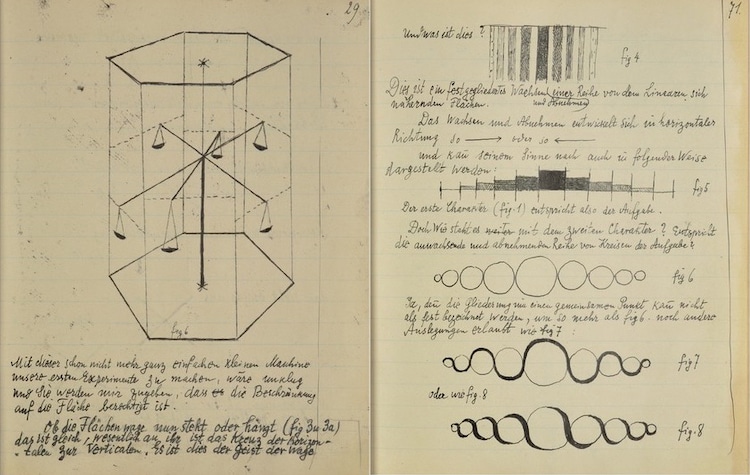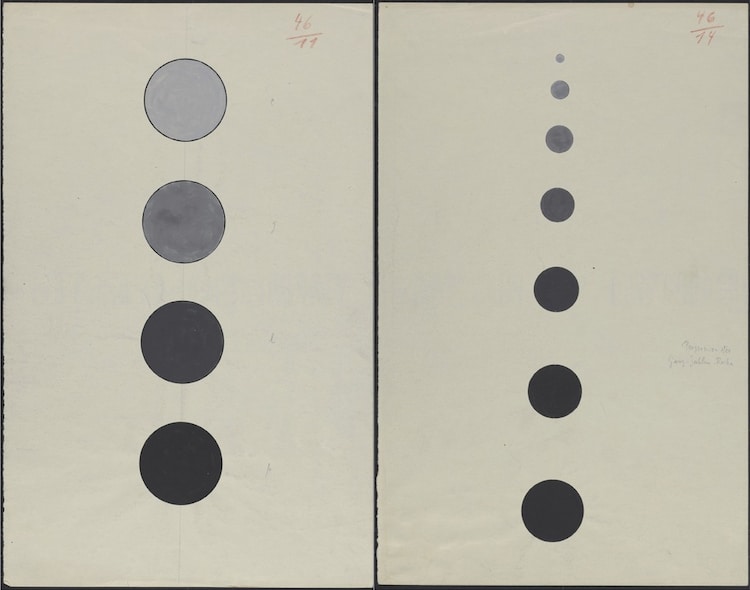
This post may contain affiliate links. If you make a purchase, My Modern Met may earn an affiliate commission. Please read our disclosure for more info.
The 20th century ushered in many significant art movements. One of the most influential that emerged from this period was Bauhaus. Originating in Germany at a school of the arts, this movement dominated paintings, graphics, architecture, and even interiors in European art throughout the 1920s and 1930s. Swiss-born artist Paul Klee was one of its early pioneers, teaching at Bauhaus for 10 years alongside other icons like Wassily Kandinsky. The Zentrum Paul Klee—a museum in Bern, Switzerland—is sharing 3,900 pages from Klee's personal notebooks which display some of the detailed notes he made for his classes.
These journals include hand-written entries in German and numerous sketches and diagrams covering topics like color theory and design. Presumably, these notes were reworked into the lectures Klee gave at Bauhaus during his long tenure. While momentous during their own time, his essays on modern art are still regarded as an invaluable source of the principles of modern art. In fact, his lectures were even collected and published in two volumes titled The Thinking Eye and The Nature of Nature.
“The writings which compose Paul Klee's theory of form production and pictorial form have the same importance and the same meaning for modern art as had Leonardo's writings which composed his theory of painting for Renaissance art,” writes Giulio Carlo Argan. Zentrum Paul Klee's resource offers an intimate look at how Klee explored these concepts on pen and paper.
Check out these notebooks via Zentrum Paul Klee's website.
The Zentrum Paul Klee archived 3,900 pages from Paul Klee's notebooks, all of which you can view online for free.



h/t: [Open Culture]
All images via Zentrum Paul Klee.
Related Articles:
45 Brilliant Quotes About Art From Famous Artists and Great Creative Minds
15 Famous Watercolor Artists Who Continue to Influence Painting Today
20+ Revolutionary Art Movements That Have Shaped Our Visual History






















































































